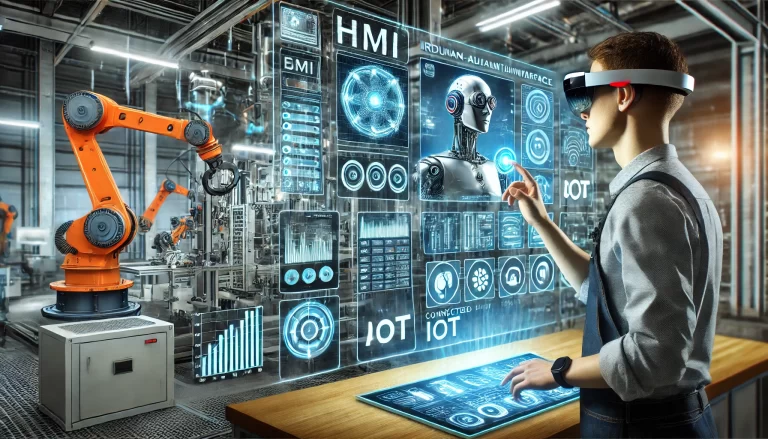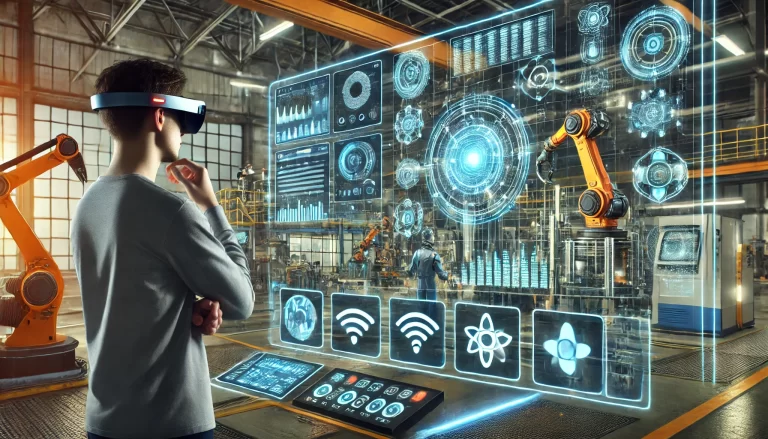With the rapid advancements in automation technologies, many have begun questioning whether Human-Machine Interfaces (HMIs) will remain relevant in the future. While automation and artificial intelligence are reducing the need for human intervention, HMIs are still crucial for many reasons. This article explores the evolving role of HMIs in the automation industry and examines their potential transformations in the years to come.
Why HMIs Are Still Necessary
Essential for Human-Machine Interaction:
- Despite increasing automation, human operators must still monitor systems, adjust parameters, and intervene in unexpected situations. HMIs enable this interaction by providing a bridge between humans and machines.
- They allow operators to visualize real-time system status, access control settings, and perform manual overrides when needed.
Enhanced User Experience:
- Modern HMIs focus on intuitive and user-friendly designs, making it easier for operators to understand complex processes. Features like touchscreens, voice commands, and gesture-based controls are examples of how HMIs have evolved.
- Future HMI systems are expected to incorporate Augmented Reality (AR) and Virtual Reality (VR), providing immersive interfaces that allow operators to interact with systems more effectively.
Critical for Maintenance and Troubleshooting:
- Automated systems, no matter how advanced, can experience faults. HMIs play a vital role in diagnosing issues by presenting detailed error logs, performance metrics, and troubleshooting guides.
- They streamline maintenance by offering real-time alerts and step-by-step instructions for resolving issues.
Customization and Flexibility:
- Automation systems are highly diverse, with unique requirements across industries such as manufacturing, healthcare, and logistics. HMIs provide customizable interfaces tailored to specific workflows, enabling better control and monitoring.
- Smart factories, for instance, rely on HMIs to adapt to changing production demands and configure robotic systems dynamically.

The Evolving Role of HMI Technology
While HMIs are unlikely to disappear, their forms and functionalities are expected to change significantly. Here are some potential developments:
1. AI-Powered HMIs
- Future HMIs will integrate artificial intelligence to enable predictive analytics, smarter alarms, and automated decision-making.
- Voice-activated AI assistants can help operators perform tasks hands-free, such as querying system statuses or initiating commands.
2. Adaptive Interfaces
- HMI systems will become more personalized, using machine learning to adapt to individual operator preferences and roles.
- For example, a maintenance technician might see detailed diagnostic information, while a manager views high-level performance dashboards.
3. Invisible Interfaces
- As technology advances, traditional touchscreen panels may be supplemented or replaced by “invisible interfaces” such as:
- Voice Commands: Allowing operators to interact with systems conversationally.
- Gesture Recognition: Using hand movements to control machines remotely.
- Brain-Computer Interfaces (BCI): Directly translating neural signals into commands for the system.
4. AR and VR Integration
- Augmented and Virtual Reality will revolutionize how operators interact with automation systems. For instance:
- AR glasses could overlay critical system data onto physical equipment, enabling real-time monitoring during maintenance tasks.
- VR environments could allow operators to simulate and test scenarios in a safe, virtual space before implementing them in the real world.
5. IoT and Cloud-Enabled HMIs
- The integration of Internet of Things (IoT) devices with HMI systems will enable remote monitoring and control. Cloud-based HMIs can provide access to data from anywhere in the world, allowing for faster responses and enhanced collaboration.
- Edge computing will further enhance HMI performance by processing data locally, reducing latency for critical applications.
Challenges and Limitations
While the future of HMIs looks promising, several challenges must be addressed:
- Cybersecurity: As HMIs become more connected, ensuring data security will be critical.
- Training and Adoption: Advanced HMIs with AR/VR or AI functionalities may require operators to learn new skills, which could slow adoption in certain industries.
- Cost: Cutting-edge technologies like AR/VR and BCIs may be expensive, making them less accessible for smaller businesses.

Are Traditional HMIs Becoming Obsolete?
In some contexts, traditional HMIs such as basic touchscreen panels or physical control interfaces may become less prominent as new interaction paradigms emerge. For example:
- Fully autonomous systems might require minimal human intervention, relying on HMIs only for occasional monitoring or adjustments.
- Unmanned operations, such as remote warehouses or autonomous vehicles, might shift towards AI-driven dashboards and cloud interfaces.
However, traditional HMIs will likely persist in industries where safety-critical operations demand simple and robust control systems, such as oil and gas, power plants, and healthcare.
Conclusion
HMIs will remain a cornerstone of the automation industry, but their role will evolve dramatically. Future HMIs will be smarter, more adaptive, and seamlessly integrated with technologies like AI, IoT, and AR/VR. While traditional forms of HMIs may see reduced use in highly autonomous systems, their essential function as a bridge between humans and machines ensures their relevance in various applications.
The challenge for the industry lies in balancing innovation with usability, cost, and security. By addressing these challenges, HMIs will not only survive but thrive in the era of advanced automation.
